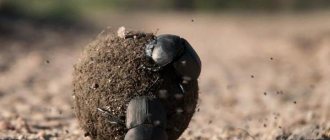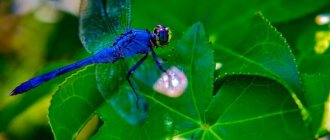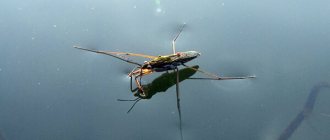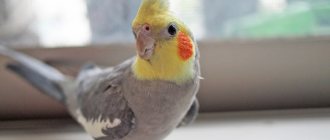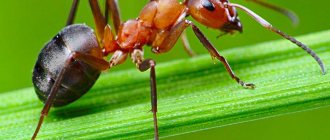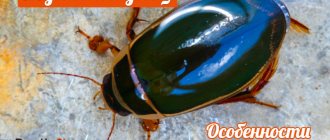Features of the structure of the insect wasp
The classic insect wasp resembles a bee in appearance, but is distinguished by a large variability in the size of its yellow-black striped body - from one and a half centimeters to ten.
Adults have four membranous wings and a barrel-shaped or fusiform abdomen covered with hairs. On the head of the insect there are large eyes that have a special structure and make it possible to look in different directions at the same time.
Also on the head of the wasp you can see special antennae, which replace several organs at once: smell, taste and touch. With the help of these devices, the insect is able to build a house for itself by measuring the size of the cells. The wasp's powerful jaws easily process plant matter, turning it into food or nesting material. Wasp sting and the danger of a bite
One of the interesting features of the wasp, which distinguishes it from other insects of a similar species, is its flexibility. The elongated body with a very narrow “waist” can be folded almost in half, allowing you to bite from any position.
The wasp's sting is located at the end of the body and serves as a source of poison. Typically, when attacking an insect, it uses not only its sting, but also its jaws, the bite of which is very painful. Wasp venom is incredibly dangerous for people prone to allergies. In some cases, it can cause respiratory arrest and death.
The benefits and harms of insects
The wasp itself is not at all dangerous to humans, however, as a result of an attack by a female, there is a risk of developing an allergic reaction.
A wasp sting is manifested by the following unpleasant symptoms:
- swelling;
- redness and inflammation of the skin;
- pain;
- itching;
- slight malaise;
- slight increase in body temperature.
If a wasp stings, urticaria may occur, and in difficult cases, Quincke's edema develops at lightning speed and anaphylactic shock occurs.
If a wasp stung for the first time, and everything ended well, this does not guarantee that a subsequent insect bite will pass without consequences. Wasp venom can accumulate in the body and cause sensitization. What to do if bitten by a wasp - first aid for a wasp sting.
These insects bring not only harm, but also benefit. They actively fight pests in greenhouses, vegetable gardens, and orchards. Some biologists argue that many people are unaware of the existence of certain species of spiders and beetles thanks to predators colored with black and yellow stripes.
In addition, today scientists continue to actively research the properties of wasp venom against cancer cells. It's all about the special structure of the protein it contains, supposedly this particular substance allows you to destroy malignant cells.
Distinctive features of wasps and bees
A famous children's cartoon character called wasps "the wrong bees" who make the "wrong honey." In fact, the difference between insects is very great. Many people remember what a wasp looks like. This creature is larger in size than a bee and much more aggressive in behavior.
But the main distinguishing feature of insects is their sting. In a bee, it has large serrations and a knot at the end, which is why it gets stuck during a bite and remains in the body of the victim. Left without a sting, the bee dies.
The wasp attack weapon is distinguished by the absence of a knot and small notches. Thanks to this, it is easily pulled out and makes it possible to sting several more times.
The largest wasp in the world
Lawn fertilizer: description, types of fertilizing
The size of the wasps varies widely: from 1 cm for the small flower wasp to 6 cm for the Asian giant scolius.
The spotted wasp Scolia is considered the beauty among the largest representatives of the Hymenoptera. The body size of the largest wasp is 32 mm for the male and 55 mm for the female.
Insects lead a solitary, primitive way of life. Scolia, with its impressive dimensions, is harmless to humans, although the bite can cause the hand to go numb.
The hornet from Asia is a giant copy of the European representative, but without a brownish tint in color: the body is up to 50 mm long, the amplitude of the wings reaches 60 mm. The named hornet wasp has a terrifying appearance. In common parlance, the hornet is called a sparrow-bee.
Wasp insect habitats
Wasps are considered one of the most common insects on the planet. They are widespread not only in all Russian regions, but also in Europe, northern Africa, Canada, the Australian continent, and Latin American countries.
They are absent only in the Sahara Desert, the countries of the Arabian Peninsula and in Arctic and Antarctic ice.
Lifestyle and habitat
Wasps are found in any area. These insects perhaps do not adapt to cold, unsuitable areas for existence. They always live close to humans, thereby providing themselves with constant food. Wide populations of wasps are present in almost all countries of Eurasia, North Africa, Australia, Mexico and Argentina. They are not found except in the Arctic and Antarctica, as well as in deserts.
Representatives of different species tend to build a social hierarchical system. Most wasps live in groups. Insects form close-knit colonies and conduct joint life activities. In some aspen families there are 15-20 thousand individuals. Each colony has a social structure that involves stratification into classes and the definition of responsibilities.
In addition to social ones, there are solitary individuals that do not depend on others and do not have a nest or swarm. These are predatory insects that catch beetles and spiders larger than themselves. They sting victims with their sting and release poison, after which they are paralyzed.
The predominant percentage of colony members are working wasps. They search for food for themselves and the larvae, and protect the nest from attack by other insects. Moreover, such individuals are quite aggressive. If they are slightly disturbed, they will immediately attack, and if they sense a real threat to their home, the entire swarm will fly out.
Varieties of insect wasp
There are a huge number of different types of wasps. The classification is based on the appearance of insects, their habitats, lifestyle, diet and many other criteria. The most common types include:
Paper wasps
This type of insect is also called house wasps because of their habitat: they build their nests on the walls and attics of residential buildings. The homes of paper wasps look quite original - they are round in shape and made of paper reminiscent of parchment.
The material for the nest is made by the wasps themselves, chewing wood fibers with their jaws and holding them together with salivary secretions.
Flower wasps
Small individuals, about a centimeter long. They live among flowers and feed on pollen and nectar. Such insects live in earthen burrows or make nests in branches. The building material for the houses of flower wasps are clay and earth grains smeared with saliva.
Hornets
In the presented photos of wild wasps you can see images of the largest and most dangerous representatives of this family. Hornets reach a length of up to five and a half centimeters. A hornet sting can cause severe anaphylactic shock, which can be fatal.
Sparkles
Beautiful iridescent insects that attract attention with their bright colors. They differ in that they are able to parasitize other insects, most often butterflies.
Germans
A type of wasp in which the difference between males and females is very noticeable. Males are large and look like ordinary wasps, while females are born wingless and look like hairy ants.
Scolia
A very beautiful species, individuals of which look like butterflies of different sizes (their size varies from a centimeter to ten).
Typhia
Small wasps that are black in color. They hunt for the larvae of cockchafers, in search of which they dig tunnels in the ground.
Other species of these lepidopterans are less common. Basically, these are wasps that live in the ground and prey on spiders, caterpillars and ants.
Main types
The wasp insect is often familiar to us from photographs. But besides the standard one with a striped yellow and black belly, there are other varieties. Wasps can be solitary or live in groups. They can also settle in different areas.
The road wasp makes a nest in the ground or even inside the corpse of a prey it has killed previously (for example, it could be a spider). The body of the dead insect will then become food for the emerging offspring.
Everyone is familiar with paper wasps, which we often see on the street in the summer. They are named so because to create nests, these species use a thin material that resembles paper in properties. And they produce it themselves, mixing their saliva with wood dust.
Wild wasps, on the contrary, settle away from people. They can often be found in the forest.
It’s interesting that a new trend has emerged today – house wasps. Some people get a dog or a cat, while others are interested in watching the life of insects. To keep such wasps, special closed aquariums are used. They are beautifully designed and look very stylish. But such a “pet,” of course, is not for everyone.
Features of insect nutrition wasp
According to the way they feed, all wasps can be divided into two main groups:
- herbivores;
- predators.
The first group is quite harmless and eats pollen, juice of berries and fruits, and sweet and sticky secretions of aphids.
Predators are quite aggressive. They attack spiders, beetles and large insects. They also look for various types of larvae in the ground. Carnivorous representatives of the wasp family attack the victim and immobilize it with their poisonous sting. The poison does not kill potential food, but only immobilizes it, preserving it for a long time.
general description
Name: Wasps Title status: uncertain
Class: Insects - Insecta Suborder: Stalked belly - Apocrita
| Habitats: | garden, forest, fields, proximity to people |
| Dangerous for: | bees, people and pets |
| Description: | stinging insects with a quarrelsome character |
The wasp insect is a stinging one, with a specific abdominal shape and lifestyle features.
To generalize, all representatives of stalked bellies with a sting, which are not representatives of bees and ants, can be characterized by the concept of wasp.
Appearance
| Dimensions | In the classical sense, the wasp has a small size of about 20 mm. But the sizes vary from 10 mm to 10 cm. |
| Color | Most often, representatives have a yellow-black body with stripes. But shades may change. |
| Wings | For the most part, representatives of the species have 4 membranous wings. But there are also completely wingless individuals. |
| Abdomen | It has the shape of a spindle or barrel. |
| Mustache | Located on the head, they are organs of touch, taste buds and even measuring instruments. |
Insect nutrition
Wasps are pollinators.
Feeding habits depend on the age of the insect and its species. Herbivorous wasp species love sweet pollen, nectar, juice of fruits and berries. They feed on aphid honeydew, the sweet secretions that pests leave behind.
There are predatory species of wasps that feed on other insects. Their diet includes flies, cockroaches, spiders, beetles, mantises and other types of wasps. They teach their offspring to do this from childhood. The wasp catches prey, stings it, injects poison and paralyzes it. This keeps the food source alive and fresh.
Peculiarities of insect wasp reproduction
Based on their lifestyle, there are also two main categories: social wasps and solitary wasps. In the first case, the uterus lays eggs. She herself determines the location of the future nest, then builds its cellular floors, into which she then lays eggs.
The queen is fertilized only once; the clutch consists of approximately two thousand eggs. The hatched larvae turn into pupae and then grow into adult workers.
Solitary wasps reproduce by mating. Females prepare nests in the same way, sealing the laid eggs in them and leaving paralyzed insects to feed future larvae. The larvae of solitary wasps develop independently.
Reproduction and lifespan
Mating of the wasp nest queen, which occurs in the autumn, occurs sometime in October. The male individuals of these insects are usually called drones, just like bees. The purpose of such a colony caste is to copulate with the queen.
They have no other responsibilities. In the fall, the queen has contact with several drones at once, and when she receives their seed, she stores it in her body until the next spring. The males, having fulfilled their natural purpose, soon die. And the uterus falls into suspended animation for the entire period of severe cold and cold.
With the arrival of warmth, she, waking up from hibernation, immediately begins the work of building a nest. What material is used to construct the home of an aspen family has already been described; it should only be added that, like bees, it consists of cells.
Queen mating occurs with several male drones
First, the queen looks for a suitable place for the nest, and then builds honeycombs. And this entire structure ultimately ends up suspended on a branch or in a hollow tree or, as often happens, on the ceiling or attic of some building. A wasp nest can be found attached to window frames, in gardens and forests, and in abandoned burrows of small rodents.
An egg is laid in each cell and develops over the next six days. Soon larvae appear in the honeycombs. First, the queen, and at a later time other family members, take care of their feeding. Their food comes from insects, thoroughly crushed by chewing.
As time passes, the next stage begins - the pupa. The larva turns into it, wrapping itself in a web. This is called a cocoon. After 3 days, the imago hatches from it, that is, the wasp in the adult stage.
Wasp emergence process
It should be noted that the eggs of these insects are not all the same. They may or may not be fertilized. The eggs of the first type produce a new queen and worker wasps. Here everything depends solely on the type of nutrition in the larval stage. Drones are given life by unfertilized eggs.
After the worker wasps emerge from their cocoons, the queen’s mission to build a nest and feed her offspring ends; now her only concern is new eggs, which she lays three hundred a day.
wasp insects take over the responsibilities of feeding the larvae . They build honeycombs and feed the queen herself. By the end of summer, worker wasps stop hatching; in the autumn, only females and drones are born.
In some cases, the queen may lay her eggs in the fall. The resulting new generation of wasps goes in search of a pair to mate outside of their native nest. After completing the mission, the males, as usual, die. However, such a fate does not befall females. They hibernate in order to form their own new colony in the spring.
The queen lives the longest in the aspen family. Its lifespan is about 10 months. Worker wasps, like drones, live much shorter lives - about four weeks.
How to protect yourself from a wasp
Wasps, unlike bees, do not produce honey. Their bites are painful and sometimes dangerous. These insects often attack bees and bumblebees that pollinate plants. But it cannot be said that they only bring harm. Many wasps destroy caterpillars, flies and beetle larvae.
Wasps cause a lot of trouble for summer residents and lovers of outdoor recreation, who are always concerned with the question of how to deal with wasps. Chemicals are sometimes not enough, so it is better to just be careful: do not walk barefoot on the ground, and destroy nests only in late autumn, when they are empty.
Why are wasps dangerous?
Wasps can cause both significant material damage and undermine human health. As for financial losses, they are borne by farmers, beekeepers and amateur gardeners. If the fruit harvest is intended for sale, then wasps can spoil the presentation of the fruit to the point of being completely unsightly, negating potential profits. Where the wasp has bitten the fruit, black spots remain on the thin peel - the fruit begins to deteriorate right on the branch. This is especially true for delicate peaches that are sensitive to touch.
Wasp nests near an apiary can also become a real disaster for its owner. Wasps behave like pirates - if they see easy prey concentrated in one place familiar to them, then they will visit there regularly, until the bees are completely exterminated.
A person’s health may also suffer if he finds himself in the wrong place at the wrong time. Even one bite does not bode well for the victim of an attack, and after numerous bites from several angry insects, you may not survive. A bite to the neck or throat is especially dangerous - swelling in this case can lead to blockage of the airways and suffocation.
Photos of all types of wasp insects
Family of social or paper wasps
Vespina
This is the most developed family of wasps, characterized by complex behavior and home architecture. Vespins live in colonies with one queen. She lays eggs, and the workers hunt and defend the nest. The future queen is in charge of founding the colony. In April she begins building a nest with the first combs. The female lays eggs and feeds the carnivorous larvae. Working individuals appear by June. With their help, the construction of a house goes faster, new tiers appear. These insects build large paper nests from chewed bark and saliva. The functions of the uterus are limited to laying eggs.
By autumn, females appear that are capable of giving birth. They mate with males and remain in shelters for the winter. The old queen dies, new families and new queens appear in the spring.
Interesting fact. Hornets belong to the genus Vespa and are the largest representatives of paper wasps. The common hornet measures 20-35 mm, while the Asian species exceeds 50 mm. An insect bite causes severe pain and an allergic reaction.
Polistins
The extensive and diverse family of Polistines includes more than 800 species. One of the most studied representatives of paper wasps is Polista. Primitive insects build open honeycombs by hanging them on grass and branches. From 10 to 100 individuals live in such a nest. In some groups of insects, the colony is founded by a single queen, while in others, polygyny is observed - the founding of a colony by several queens.
Polistinas feed on ripe fruits, aphid secretions, and nectar. Their larvae receive partially fermented parts of killed insects.
How long do wasps live?
How long wasps live depends on which group the individual belongs to in the caste system. Working females and males always live only 1 season; in the Central region of Russia this is usually 4–5 months. They appear in the spring and die from the cold with the first frost. Only queens are able to survive winter. In autumn, they hide in the ground, humus, under the bark of trees and in other places where withered vegetation and snow can reliably shelter them from frost and wind. In the spring, the wasp wakes up and begins to rebuild the nest and reproduce the colony. If the queen manages to survive the winter from year to year, then she can live from 3 to 5 years.
Where do wasps live?
Geographically, wasps are found throughout the world. Where wasps physically live depends on the species and preferences of the particular colony. Insects can make a nest in:
- Earth
- A hive built from paper that the wasps themselves produce
- Cavities and cracks in building materials
- Hollow stems and branches of plants
- tree hollows
Hanging hives are often placed:
- On the walls of buildings
- Under the roof canopy
- In the corners under the ceiling of the premises
- Among the tree branches
- In grass
- In outbuildings
- In the corner of the window frames
To build nests above ground level, wasps usually choose places protected from wind and precipitation.
How is it different from a bee?
Visually distinguishing a wasp and a bee is quite easy, you just have to take a closer look at the insects. Despite the fact that the color of the insects is similar, the color of the wasp is brighter and more contrasting. The bee against the background of the wasp looks more faded, and the pattern on the body is more blurred and smeared. The body of the bee is stockier, there is no “wasp waist”. In addition, there is much more hair on the body of a bee.
wasp sting
In addition to appearance, insects have other differences:
- The bee has a jagged sting, while the wasp has a smooth one, so that it can use it repeatedly without harm to itself;
- bees eat pollen, nectar and honey, the wasp's diet is much more varied;
- bees are usually smaller in size.
Bees are calmer insects, while wasps are annoying and aggressive.




